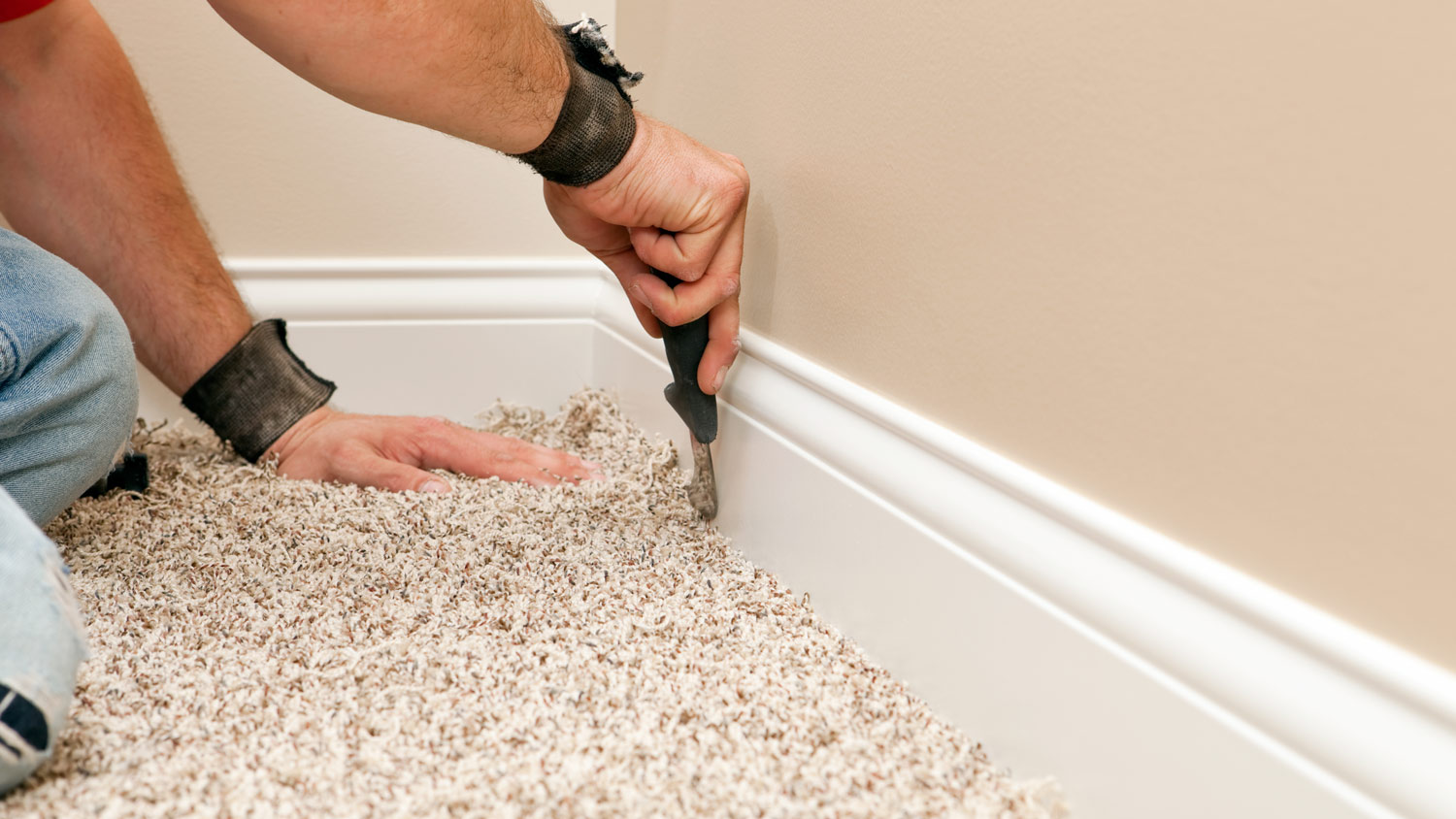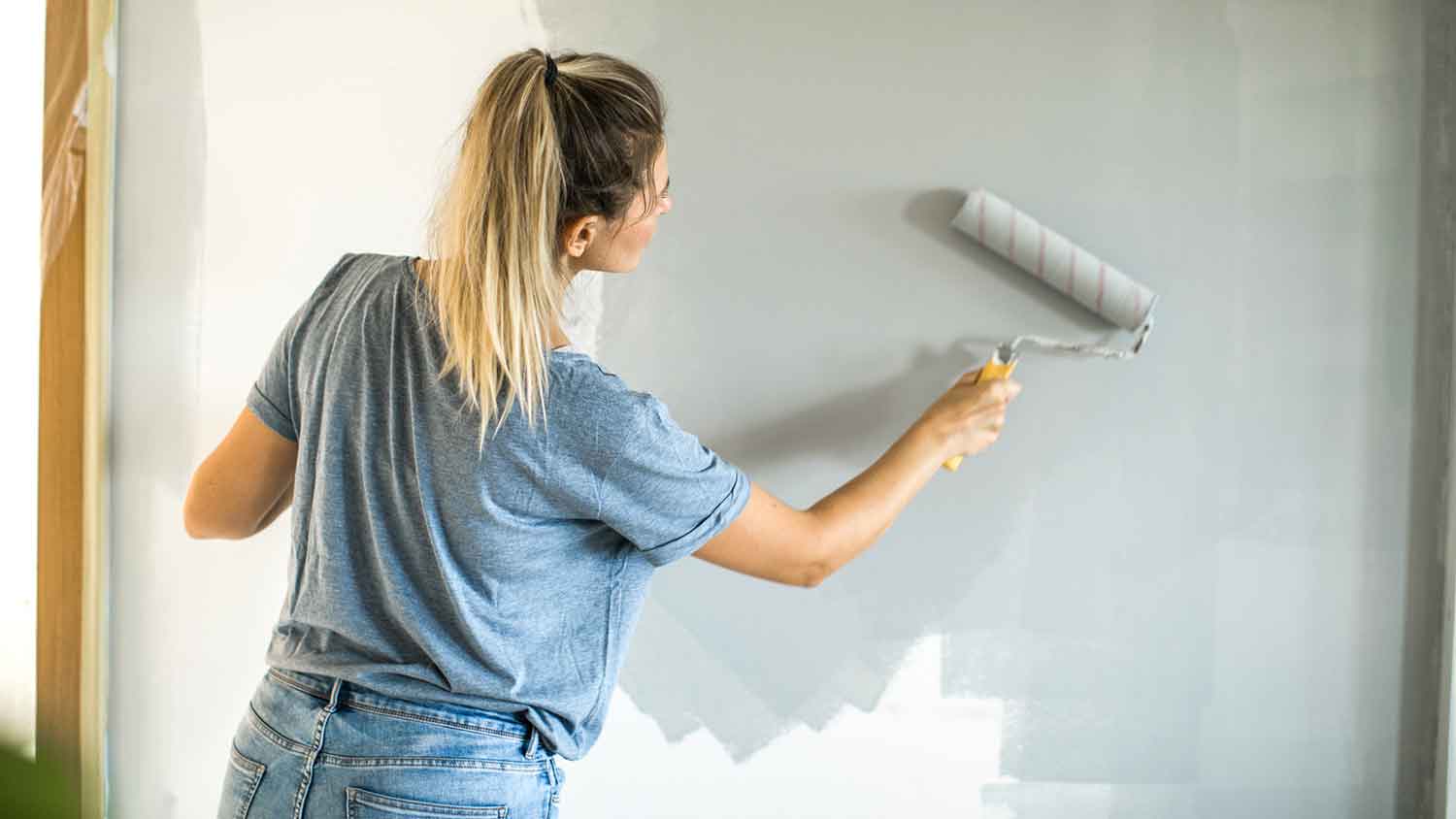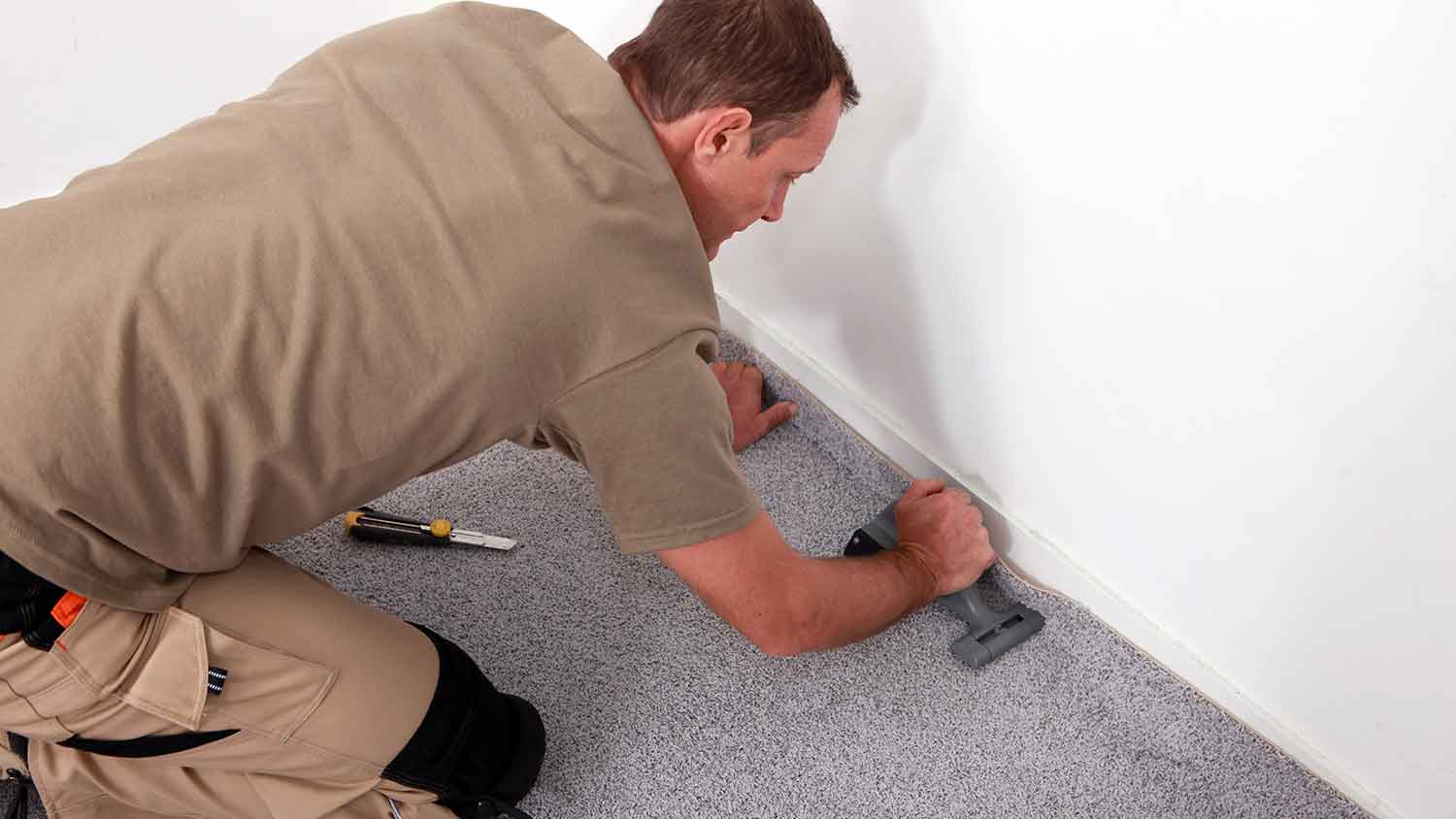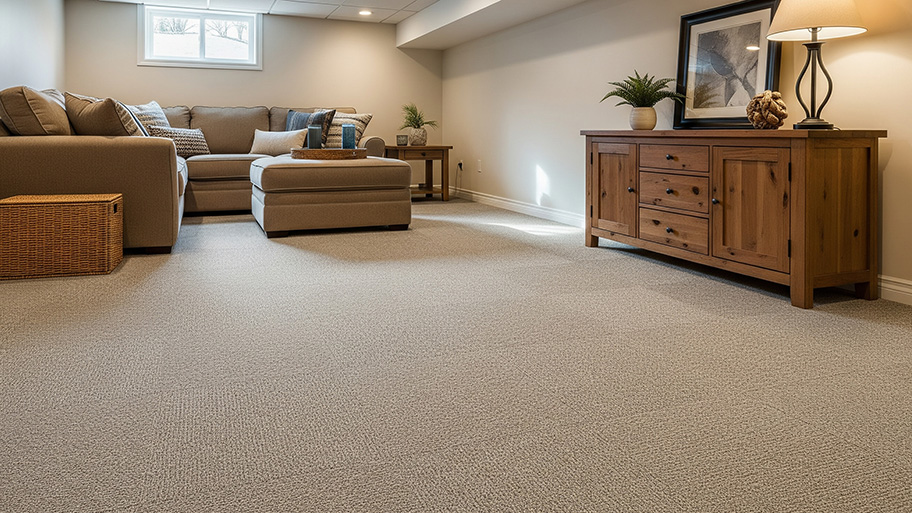
Get a clear estimate for carpet repair cost. Learn what impacts pricing, compare repair types, and find ways to save on your next carpet project.
Make the right decision to avoid scary splatters and a flooring faux pas


Painting your room first makes it easier to get full coverage from top to bottom, but you may have to worry about the flooring installation process causing damage to your fresh paint.
Installing flooring first eliminates the chances of messing up a fresh paint job, but it opens you up to potentially damaging your new carpet with paint splatters.
Using plastic tarps and painter’s tape throughout both processes can help eliminate the chances of damage and frees you up to tackle your room renovation in any order you want.
Professional painters and carpet installers know how to finish each job without any expensive mishaps.
When it comes to rapidly transforming a room, both painting the walls and installing new carpet are up there in terms of payoff. Either project on its own can make a living area feel like a whole new space. Doing both? Now you’re really talking. However, doing these two particular projects at once raises a certain kind of conundrum. Should you tackle paint or carpet first? Obviously, you don’t want to splatter paint all over your new carpet, but you also don’t want your carpet installer to accidentally damage your freshly painted walls.
Though many people choose to paint first to decrease the risk of splatters, there's no “right” answer to this question. Instead, there are simply pros and cons to consider as you make your decision. Below, find the most important factors to keep in mind when weighing out which transformation you want your home to undergo first.
| Painting First | Carpet First |
|---|---|
| Less splatter stress | Lower chance of wall damage |
| Better wall coverage | Easier to color-match paint to carpet |
| Possibility of wall damage | Floors could get splattered |
| Trim will be harder to paint |

Painting first has a few obvious pros, but it has some sneaky cons to think about, too.
Obviously, painting can be messy. Hence, the old, ripped jeans and big T-shirts people wear when they’re taking on a painting project.
If you’re painting a room with the knowledge that you’re about to install new flooring, the process might be less stressful because any spills and splatters matter less. After all, the flooring you just spilled paint on is about to go. Still, protecting your floors and furniture with plastic tarps and tape can reduce mess and damage, no matter what order you’re working in.
If you’re planning to put in carpet, painting first can help ensure you get the best possible coverage from the bottom of the wall (or the top of the baseboard) to the top. It can be difficult to get a precise edge when painting along the bottom of a wall with carpet already installed. You could end up with unpainted portions, and it’s all too easy to accidentally get paint on the new carpet, even if you use painter’s tape to guard it.
The process of installing new flooring—and removing old flooring—can be somewhat intense. There’s a non-zero chance that your freshly painted walls could get dinged or dented along the way. If you paint first, that means more touch-up work for you in the long run, or even the need to entirely repaint the room. Of course, going through the process carefully (or hiring a professional painter) can help reduce this risk.

Now that we’ve checked into the pros and cons of painting first, let’s turn the equation on its head. What about starting by installing the flooring?
As mentioned, installing new carpet—and removing old flooring—can be a bit of a rough task, and it’s possible for walls to get dinged and damaged in the process. Additionally, small bits of dust, dirt, and debris can be loosened during the process. These particles may, unfortunately, lodge themselves in your freshly painted walls. Installing flooring first reduces the risk of all of these problems.
It may sound like a small thing, but think about how much easier it’ll be to hold up paint chips to your flooring if it’s already installed. By putting down your new carpet first, you’ll have a better understanding of what different paint colors can bring to your room.
If you paint over a freshly laid floor, you run the risk of splattering and ruining your brand-new (costly) investment. That said, taking the proper precautions can decrease the risk. Plus, many professional painting companies carry insurance designed specifically to cover this possibility and may pay to replace your carpet if needed.
Depending on the type of carpet you have and your baseboard or trim, if you install flooring first, it may be difficult to achieve the best possible coverage with your paint.
Painting and carpeting a room can be a successful venture in either direction. It’s all about the precautions you take along the way.
Putting down painter’s tape and plastic tarps can protect your floors whether they’re fresh or faded and reduce the risk of accidentally splattering paint on brand-new carpet. On the other hand, going through the flooring process carefully and slowly can reduce the risk of dinging your freshly painted walls.
Paint can take up to a month to fully cure. If you choose to paint before installing carpet, do so 30 days before your flooring installation project to reduce the risk of dirt and debris getting stuck in the paint.
Savvy DIYers can complete both painting and carpeting jobs successfully. But hiring out can make your job as easy as, well, watching paint dry. Chat with your local carpet installer for more details and to get started on transforming your home.
From average costs to expert advice, get all the answers you need to get your job done.

Get a clear estimate for carpet repair cost. Learn what impacts pricing, compare repair types, and find ways to save on your next carpet project.

Carpet padding makes your carpet feel extra comfortable and protects your floors from damage, but how much does carpet padding cost? Let’s look at the numbers.

Not only are carpet tiles easier to install than carpet, but they’re often more affordable. So, how much does carpet tile installation cost? Let’s take a look.

Carpet can bubble up for several reasons, including high humidity and improper installation. This article explains why your carpet is bubbling up and how you can fix it.

Learning how to stretch carpet is a great way to protect your investment and keep everything tidy. Here are the steps to successfully restretch carpet on your own.

Sticky situations are no match for a DIYer armed with our guide on how to remove glued carpet. Skip the struggle and say hello to refreshed floors.